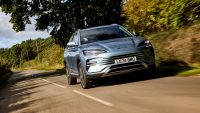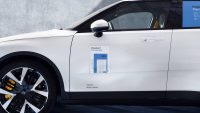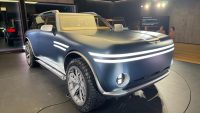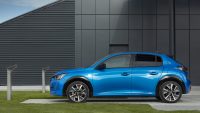Nissan has revealed plans to offer vehicle-to-grid technology for the same price as a ‘regular’ electric car charger from 2026.
Vehicle-to-grid – or V2G – technology allows an electric vehicle to act as a large battery, storing energy during periods of low demand and then using this to power a home during durations of peak demand. The stored energy can even be sold back to the grid.
Nissan says that the technology could cut the annual cost of powering an EV by up 50%.
Through this, Nissan says that the technology can help smooth out pressure on the grid and enable it to transition away from traditional fossil fuels more easily.
A UK trial has been part-funded by the government’s Advanced Propulsion Centre UK (APC) which has been created to boost the automotive’s sector move towards net zero.
Working with a number of partners – including EDF Energy and charging system supplier Enovates – Nissan has become the first automotive brand to achieve Grid certification for AC-based systems in the UK, which effectively allows the company to develop V2G technologies which can ‘talk’ with the national grid and cloud-based services.
It is this ‘handshake’ process which is crucial to the entire system, with special technology within the car allowing to effectively distribute its energy not only back to the grid, but also through the home it is connected to.
Hugues Desmarchelier, Nissan vice president, global electrification ecosystem & EV programs, said: ‘The technology we are bringing to customers is a potential game-changer for how we view the car. Not just as a means of getting from A to B, but as a mobile energy storage unit, capable of saving people money, supporting the transition of our energy systems away from fossil fuels and bringing us closer to a carbon-free future.’
Nissan has also stated that all Nissan vehicle will get vehicle-to-grid technology by 2030, which would see cars like its battery-powered Ariya kitted out with the system.


































